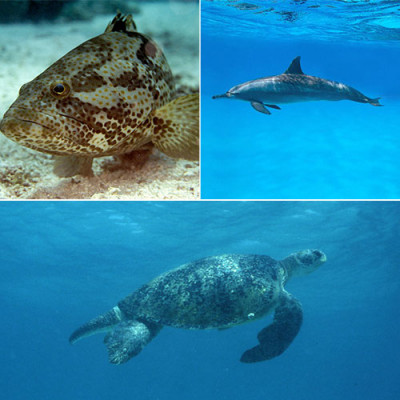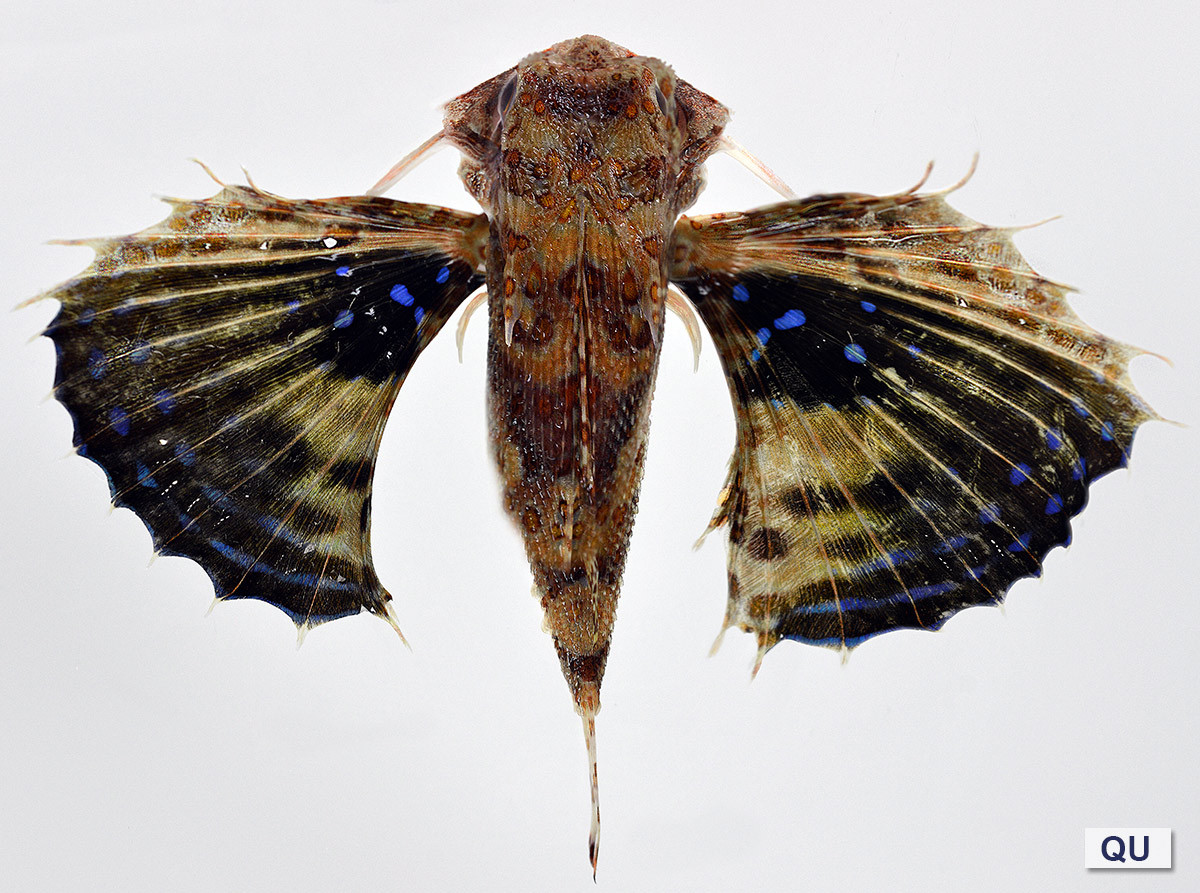Name: Helmet Gurnard
Local name: Ummgenaheen
Scientific name: Dactyloptena orientalis
Classification: Class: ray-finned fishes; Order: scorpionfishes; Family: flying gurnards (Dactylopteridae)
Size: It commonly attains 20 cm, and may reach a maximum length of 38 cm.
Habitat:
Adults are benthic and found in shallow coastal waters over sandy substrates. Helmet Gurnards are solitary, well-camouflaged, and slow-moving. They feed on crustaceans, clams, and occasionally on small fish.
Distribution:
The species is widespread in the tropical and warm temperate Indo-Pacific, from the Red Sea and East Africa to the Hawaiian Islands, north to Japan, and south to Australia and New Zealand.
Conservation status:
It has not yet been assessed globally by the IUCN Red List of Threatened Species. In a recent regional assessment for the Arabian Gulf it was classified as Least Concern (LC). It is not targeted in fisheries, but occasionally caught as bycatch in seines.
Description:
The Helmet Gurnard is characterized by a heavily armored box-like body. The anterior two spines of the dorsal fin are separated from remainder of the spinous dorsal fin; the caudal fin is truncate to slightly emarginate; pectoral fins are long and wing-like, reaching to or beyond the caudal-fin base, with the ray tips free of membrane. The color is variable, usually yellowish brown to light greenish brown dorsally, with many elongated brownish spots, and nearly white ventrally. The pectoral fins of adults have prominent dark orange, brownish or black spots.








